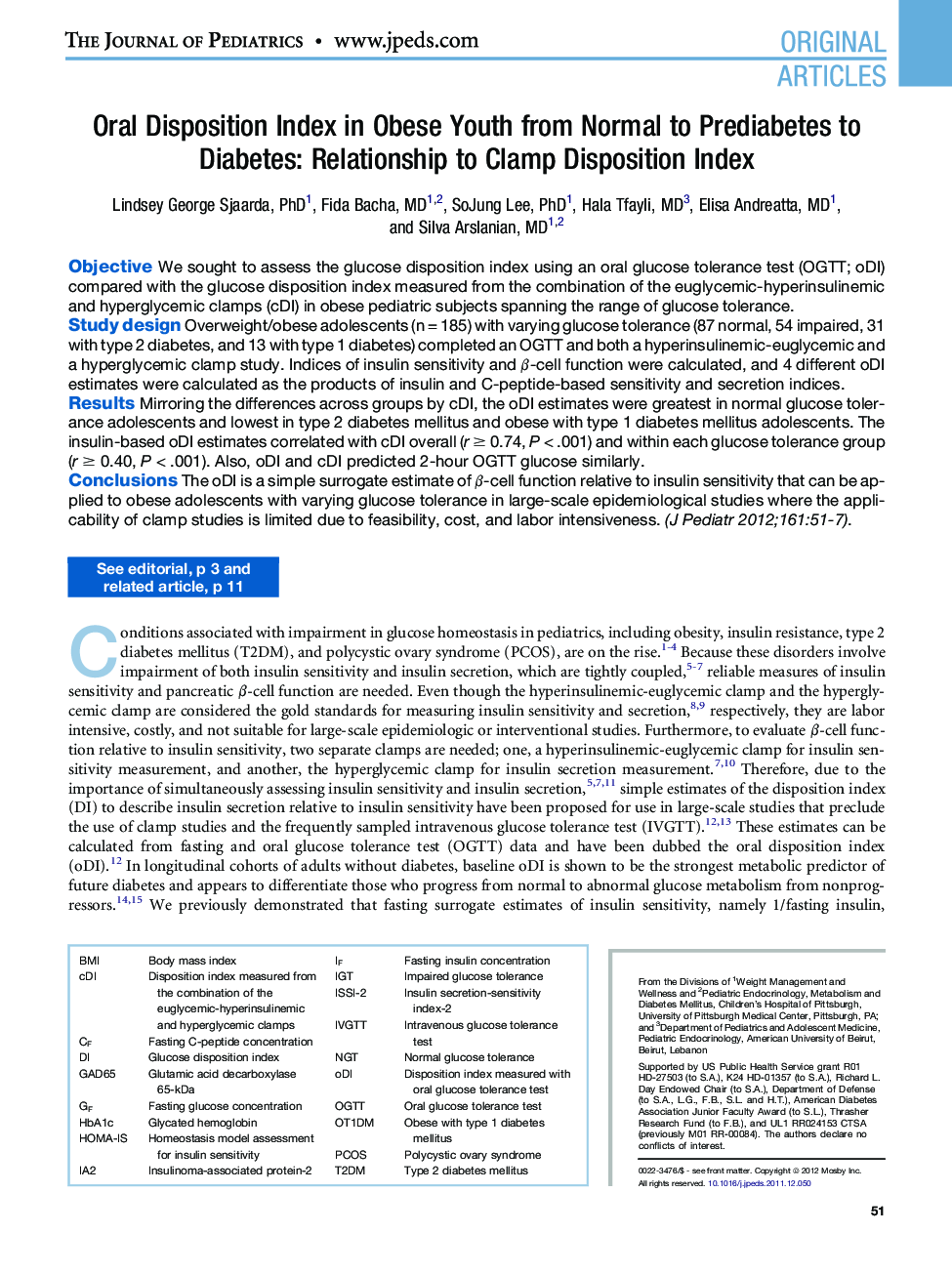| Article ID | Journal | Published Year | Pages | File Type |
|---|---|---|---|---|
| 6224865 | The Journal of Pediatrics | 2012 | 7 Pages |
ObjectiveWe sought to assess the glucose disposition index using an oral glucose tolerance test (OGTT; oDI) compared with the glucose disposition index measured from the combination of the euglycemic-hyperinsulinemic and hyperglycemic clamps (cDI) in obese pediatric subjects spanning the range of glucose tolerance.Study designOverweight/obese adolescents (n = 185) with varying glucose tolerance (87 normal, 54 impaired, 31 with type 2 diabetes, and 13 with type 1 diabetes) completed an OGTT and both a hyperinsulinemic-euglycemic and a hyperglycemic clamp study. Indices of insulin sensitivity and β-cell function were calculated, and 4 different oDI estimates were calculated as the products of insulin and C-peptide-based sensitivity and secretion indices.ResultsMirroring the differences across groups by cDI, the oDI estimates were greatest in normal glucose tolerance adolescents and lowest in type 2 diabetes mellitus and obese with type 1 diabetes mellitus adolescents. The insulin-based oDI estimates correlated with cDI overall (r ⥠0.74, P < .001) and within each glucose tolerance group (r ⥠0.40, P < .001). Also, oDI and cDI predicted 2-hour OGTT glucose similarly.ConclusionsThe oDI is a simple surrogate estimate of β-cell function relative to insulin sensitivity that can be applied to obese adolescents with varying glucose tolerance in large-scale epidemiological studies where the applicability of clamp studies is limited due to feasibility, cost, and labor intensiveness.
